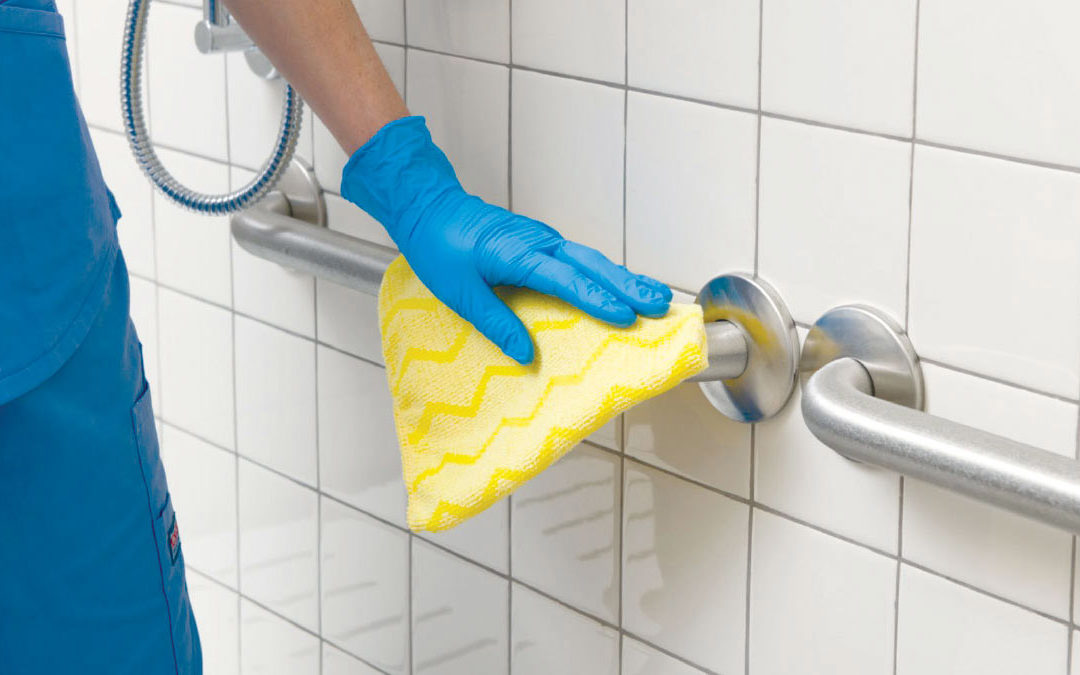Given staffing shortages, high turnover and heavy workloads, it’s not surprising that certain steps in nursing home cleaning procedures can get skipped. But while following a consistent protocol may cost more time and resources, it’s of vital importance to infection prevention and preserving the well-being of residents, staff and guests. Take control during the uncertainty of COVID-19 with four steps to clean and disinfect efficiently and help protect against the threat of harmful germs, bacteria and viruses.
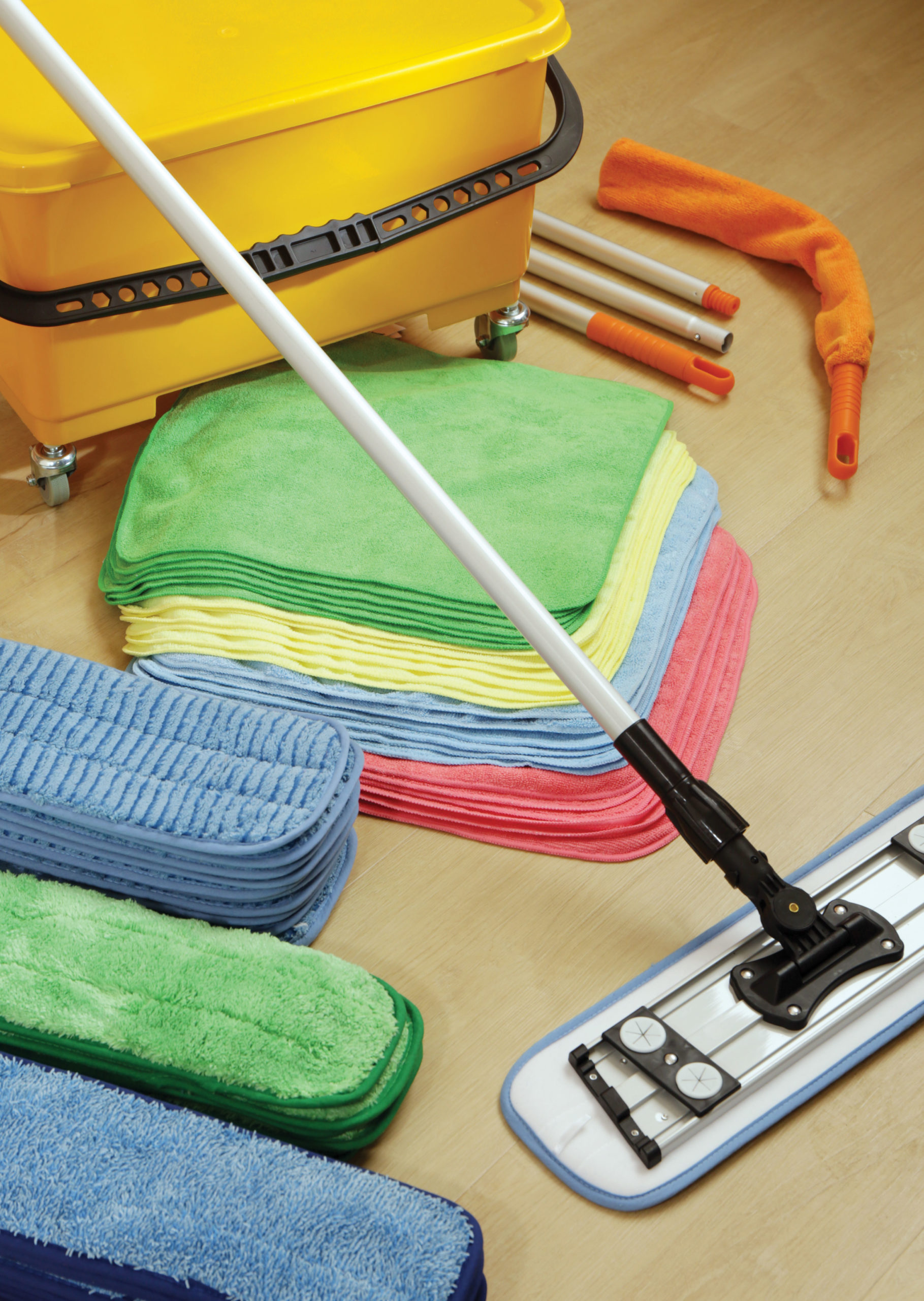
Step 1: Cleaning
Clean all vertical and horizontal surfaces to remove soil, dirt and dust. Getting rid of dirt is an essential component of a robust infection prevention program, as dirt is rich in nutrients that feed bacteria and other pathogens. Additionally, it’s important to remove visible dirt prior to disinfection, as it can affect the efficacy of the disinfectant being used. Microfiber dusters, cloths and flat mops are great at picking up not only dirt but also unwanted pathogens.
- When cleaning horizontal surfaces, operate in either a left-to-right or a right-to-left motion. Make sure you’re consistent in your direction so you’re not spreading dirt and pathogens over surfaces you just cleaned.
- For vertical surfaces, start at the top of the room and move down.
- Lastly, clean the floor with a damp microfiber flat mop. Dust and dirt that aren’t collected by the microfiber products in the first wipe will fall down to the floor and should be picked up with the flat mop.
Step 2: Disinfecting
Disinfect all hard, non-porous surfaces with an EPA-registered disinfectant like those recommended for use in protecting against COVID-19. These include all high-touch surfaces, such as:
- Handrails
- Light switches
- Doorknobs
- Bedrails
- Faucet fixtures
- Toilet flushers
- Nurse call cords
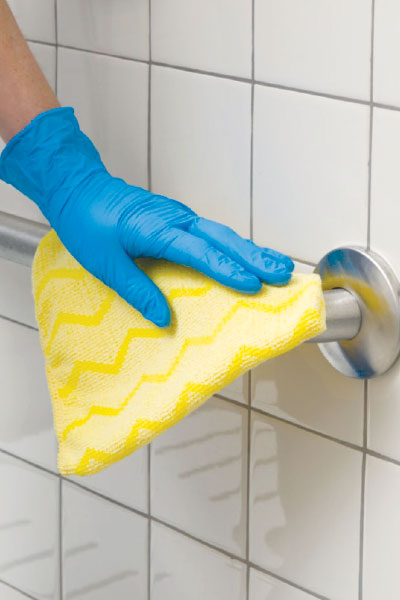
Be sure to read each chemical manufacturer’s label for guidance on pathogens it’s able to kill as well as the amount of time the surface must remain wet (known as dwell time or contact time) in order to achieve that kill. If the disinfectant doesn’t remain wet on the surface for that full time, there will not be a 100% kill.
Some chemicals are both cleaners and disinfectants in one and can prove to be a great time saver if applied properly. Once again, it’s important that you read the manufacturer’s labels for the proper procedure.
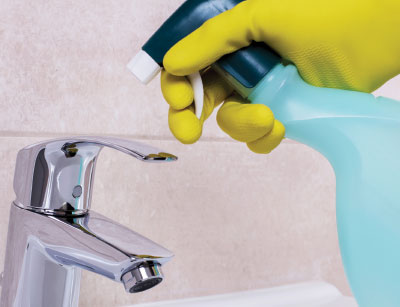
Step 3: Rinsing
Rinsing after cleaning may be needed because some disinfectants can be damaging to the surface, harmful to humans if ingested or leave behind a residue.
To avoid damage to surfaces, make sure the disinfectant is safe for application on the particular surface you’re trying to disinfect. This information can typically be found on the chemical manufacturer’s label.
Some disinfectants are ineffective against certain pathogens like C. diff, which may require you to choose a more powerful and possibly more caustic chemical. In those cases, you’ll want to be sure that you limit the disinfectant’s use to just those surface areas of concern and follow up with a clean water rinse as soon as the dwell time has been met.
When disinfecting in food environments, such as kitchens and dining rooms, it’s critical that a clean-water rinse is performed to prevent people from ingesting the chemicals.
Some disinfectants can leave behind a residue. While not all chemical residue left behind is harmful to surfaces or humans, it is often unsightly. A simple rinse with a wet cloth can take care of the issue and keep your community looking neat and tidy.
Step 4: Enhanced Disinfecting
Electrostatic sprayers offer an enhanced level of disinfection by using electrically charged water/chemical molecules to fully coat a surface. They provide the liquid with a positive charge so it is naturally attracted to the negatively charged surfaces that exist in nature, which ultimately leads to a fuller and more even coating. Their ability to efficiently and effectively coat virtually all surfaces, including those hard-to-reach areas that are often overlooked or missed in the regular cleaning and disinfecting steps, make them an invaluable ally in the fight against germs and bacteria.
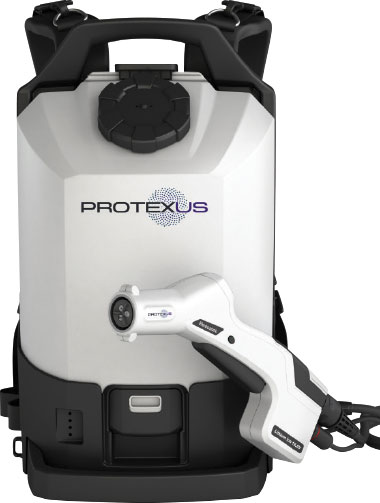
Direct Supply carries thousands of top cleaning products and supplies from well-known brands at various price points to complement any Senior Living cleaning, disinfecting and infection prevention program. Shop online or contact your account manager at 800-634-7328 for more details or to order. You can also find more ideas and tips on infection prevention and control in Senior Living.

